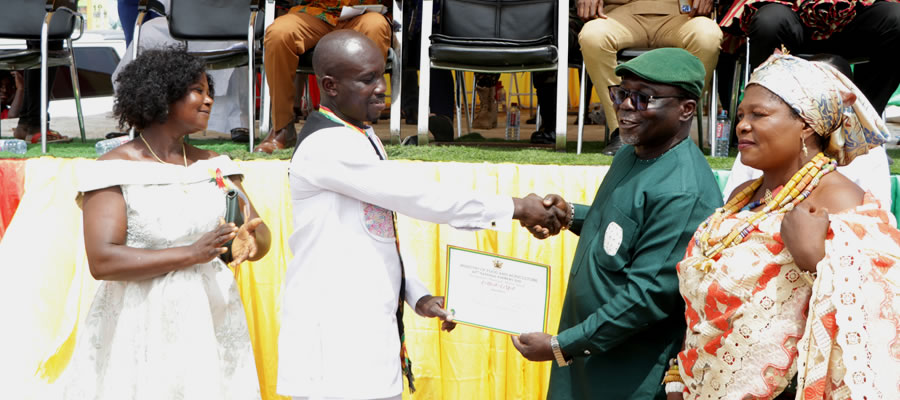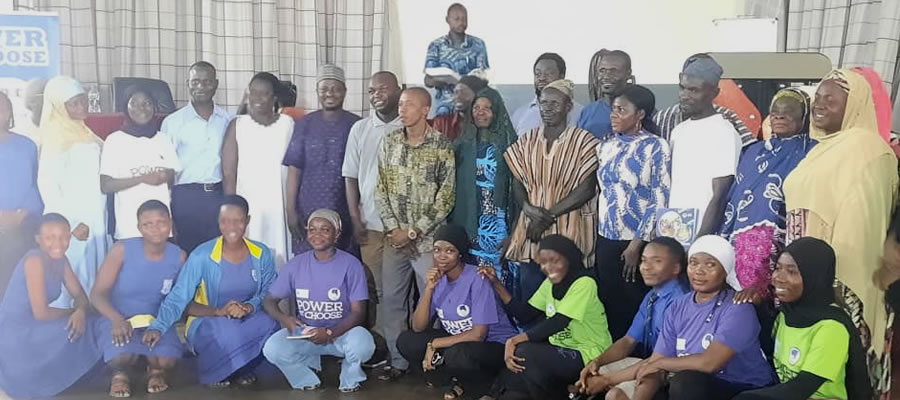

Vulnerability
Introduction
Persons with disabilities (PWD) is defined as those who are unable to or are restricted in the performance of specific tasks/activities due to loss of function of some part of the body as a result of impairment or malformation (Ghana Statistical Service, 2012). As a result, PWDs face a wide range of life challenges because disability, in whatever form or type, can reduce an individual’s ability to function to his/her full potential. Disability can limit an individual’s full participation in a number of activities in life. Estimates from the World Health Organisation (WHO) suggest that there are more than 600 million PWDs in the world, of which approximately 80 percent live in low-income countries (Ayiku, 2012).
In Ghana, PWDs are generally marginalized and suffer from discrimination on account of their disability status. They are mostly regarded as less productive and not capable of contributing to development compared to their non-disabled counterparts. Accordingly, they are often seen as a burden on society and their unfortunate circumstances are viewed sometimes as a curse or punishment. Furthermore, they have poorer health status, lower educational achievements, less economic participation and higher levels of poverty than people without disabilities (World Health Organisation, 2011).
The inclusion of questions on disability in the 2010 PHC is therefore paramount. The issues of disability discussed in this chapter are population with disability, types of disability, disability and economic activity and disability, education and literacy.
Population with Disability
Out of a total population of 190,972 in Ashaiman (2010 PHC), Persons with Disability are 4,421, representing a little over two percent (2.3%) (Table 6.1). The proportions of both male and female PWDs in the municipality are about the same. Males are 2.4 percent and females 2.2 percent.
The most significant type of disability in the municipality is emotional, accounting for 36.2 percent, followed by sight, 28.3 percent. From the table 36.3 percent of male PWDs have emotional disability compared with 36.1 percent females. On the other hand 31.1 percent females have sight disability whilst 25.6 percent males have the same condition. The least disability type in the municipality is hearing which accounts for 7.6 percent of all PWDs.
Disability and Economic Activity
Table 6.2 shows that 2.4 percent of PWDs in the Municipality are employed. Twenty-eight percent are unemployed and 3.8 percent are economically not active. Majority of the PWDs in employment are those with emotional difficulties who account 0.9 percent of all employed persons with disability. The table further reveals that 2.5 percent of all male PWDs are employed compared with 2.5 percent females. Again, 4.4 percent of all male PWDs are economically not active as against 3.4 percent female.
Disability, Education and Literacy
Table 6.3 shows population 3 years and older by sex, disability type and level of education. Out of a total population of 4,271 PWDs in the municipality, 16.9 percent have never attended school, 51.7 percent have had basic education while 28.0 percent have had SHS or Higher Education. In all about 54.5 percent of PWDs with other forms of disability have had some basic education. However, 42.0 percent of PWDs with intellectual disability have had SHS or Higher Education. There are slightly more males 7.8 percent than females 7.0 percent with basic education. Again, the proportion of male PWDs who have SHS or Higher Education is higher than their female counterparts, 19.6 percent in the municipality. In all there are more females with physical disability who have never been to school 32.3 percent than males, 22.2 percent. Also, among the sexes, males with intellectual disability have had more higher education 48.3 percent than females of the same condition 33.9 percent.
Date Created : 11/17/2017 8:03:14 AM











 facebook
facebook
 twitter
twitter
 Youtube
Youtube
 +233 593 831 280
+233 593 831 280 0800 430 430
0800 430 430 GPS: GE-231-4383
GPS: GE-231-4383 info@ghanadistricts.com
info@ghanadistricts.com Box GP1044, Accra, Ghana
Box GP1044, Accra, Ghana